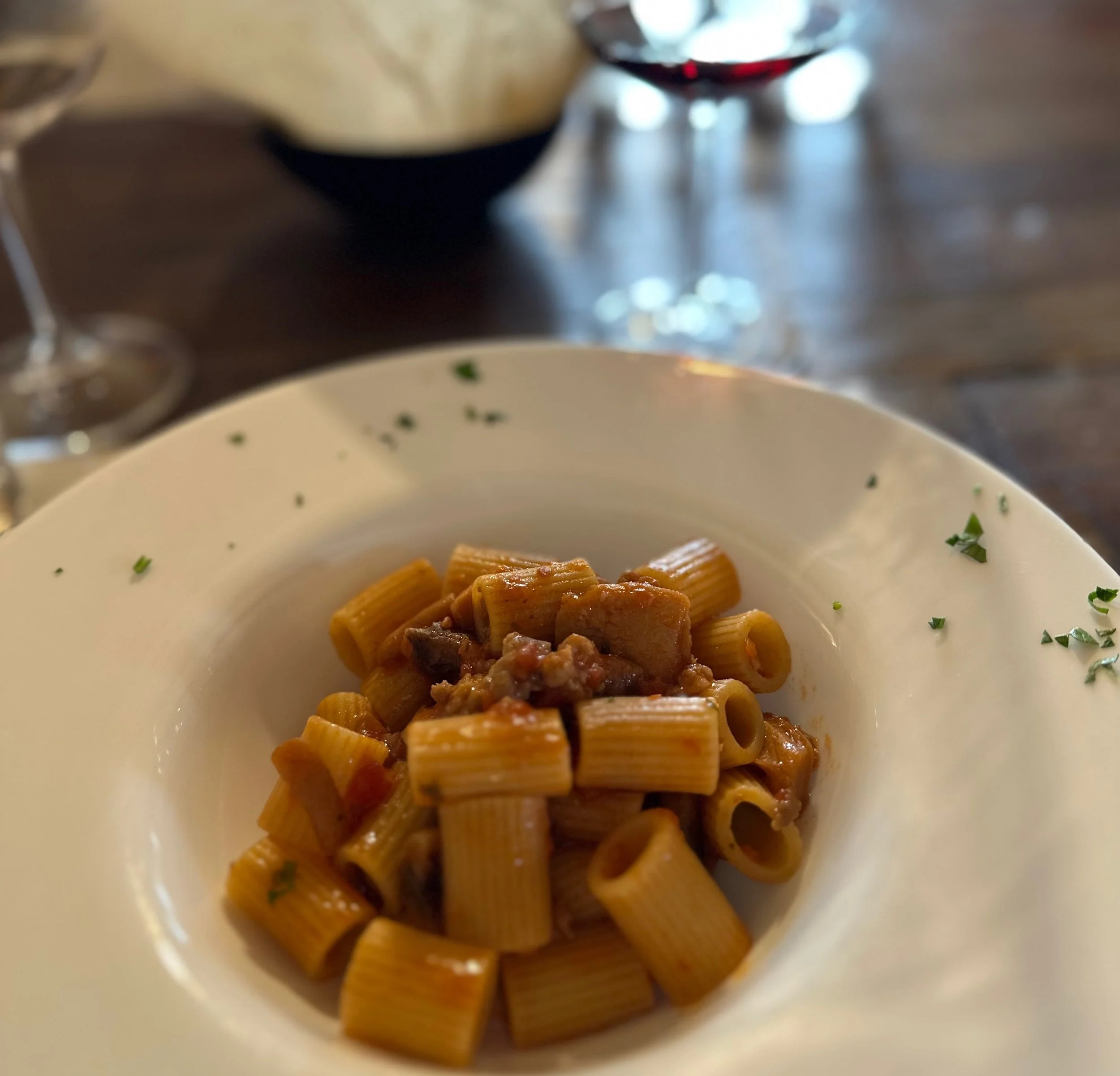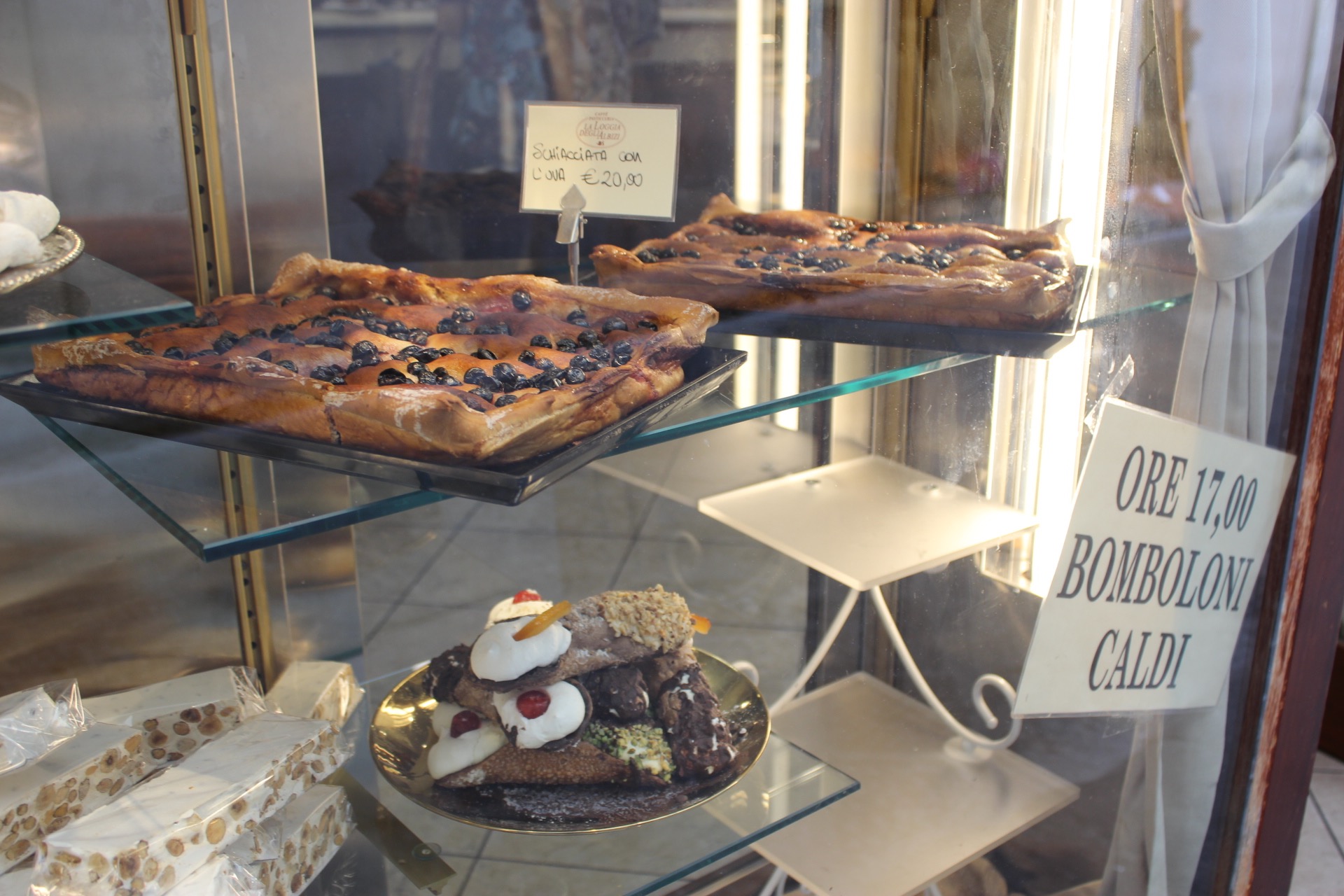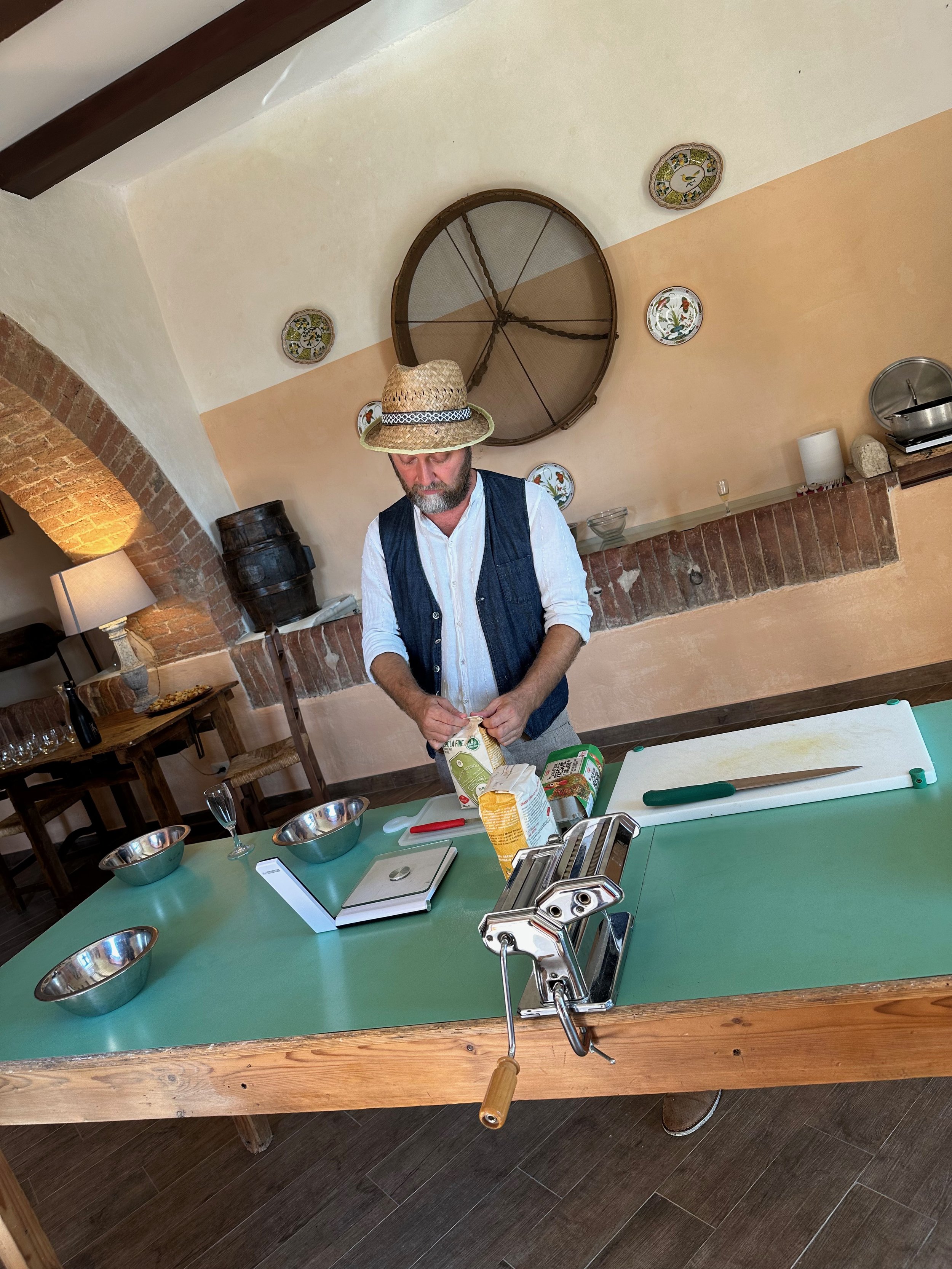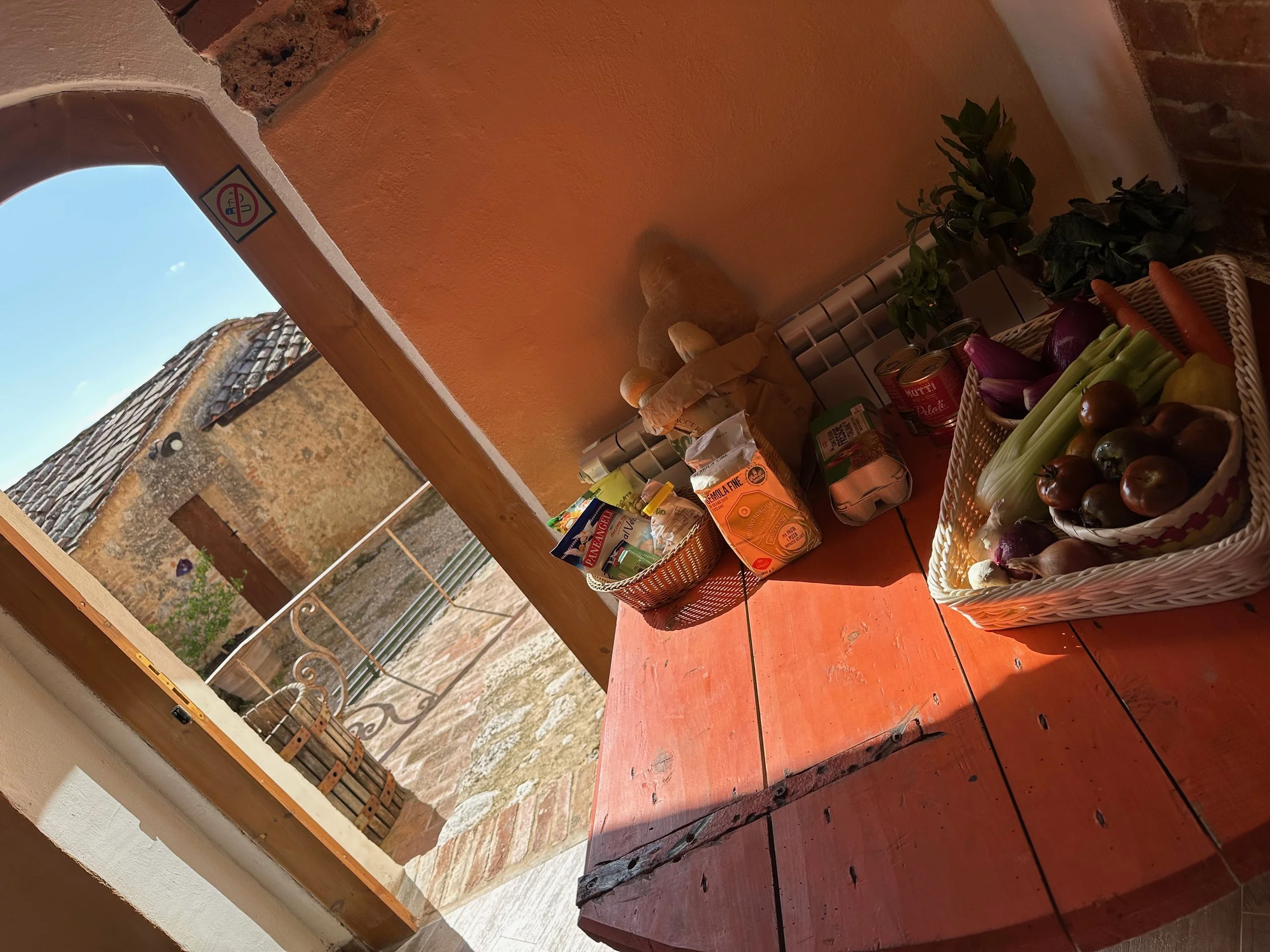I’ve been making spaghetti sauce for years but on this past trip to Italy, I learned how to make Ragu. As the instructor said, there is no such thing as “spaghetti sauce” in Italy, (nor is there any such thing called “Alfredo Sauce.” (Well, how could I argue?)
I’ve always known travel to be something that is necessary not just to expand my understanding of different places but to learn new ideas, new techniques, and ways of how others do things differently.
I used to hold back and be mindful of what I ate when traveling, but I’ve learned to relish in the food just as anyone watching their health who lives overseas would do. Europeans are particularly mindful of health, but most importantly, they often focus on fresh ingredients.
For example, we were taught on this past trip to Tuscany in a cooking class that very large garlic bulbs are better at digesting your food. A shot of a liqueur after dinner is also something taken for digestion.
“After dinner in Rome, we were offered a drink with similar qualities of a Jägermeister-type drink with fruits, licorice, anise, and similar spices. It was not something offered to keep the party going or a dessert choice but rather for digestion. In Rome, we were offered this free drink after dinner as a hospitable gesture to help with the digestion of our rich red sauces over our plates of pasta. Made sense and it was appreciated. When in Rome…
When in Santorini or in Southern Italy, it’s typically limoncello. ”

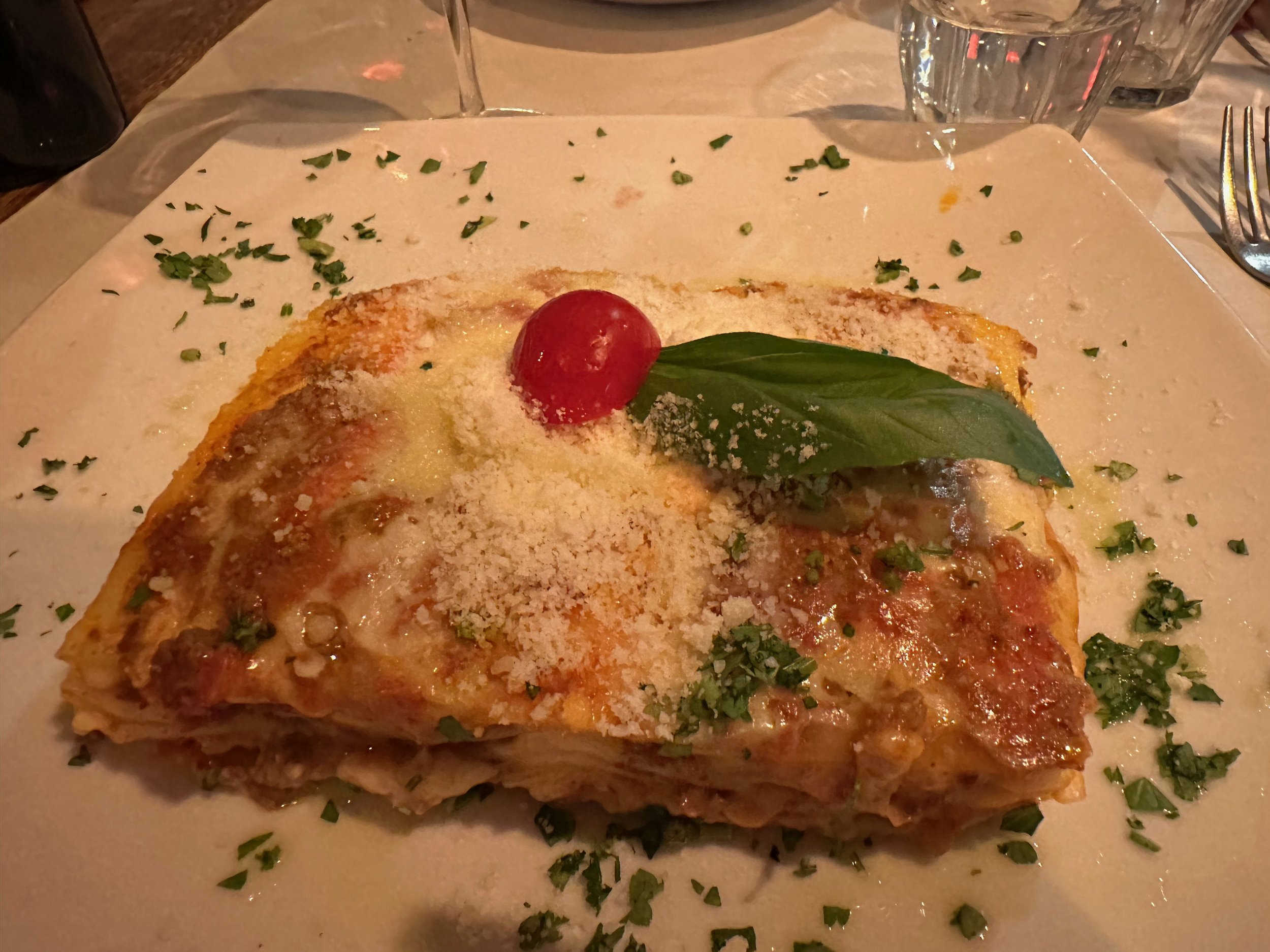
We were tourists and were pampered by the locals as they shared their cooking secrets, tips, and warm hospitality.
A Tuscan Ragu over Tagliatelle noodles was prepared with different bruschettas for appetizers, and homemade cookies were prepared using Mauro’s grandmother’s handed-down recipe. We had this lunch as we sipped various wines and were taught how to pair them in Tuscany.
It was amazing.
Our Instructor Mauro
Here is the recipe.
Ingredients:
2 medium-sized carrots diced
1 celery stick cut into small pieces
½ medium size onion diced
Half of firm tofu diced or chopped
2 sausages taken out of the casings and cut into small pieces
Fresh herbs - 2 twigs of rosemary; plucked off the stem and finely chopped
5 twigs of thyme with leaves shaved off the stem,
One half a bush of basil; leaves on top of each other, rolled, sliced, and then chopped
2 fresh bay leaves (dry ok)
1/2 Tbsp of fennel seeds
1-2 garlic cloves minced
½ Tblsp of red chili flakes
Big 28 oz can of whole peeled tomatoes (preferably from Italy, like Cento or Mutti)
⅓ bottle of good red wine, preferably one that is dry (unless you're trying to make a sweeter ragu, then I imagine you’d choose a more fruity wine.)
½ cup of olive oil
1 Tsp of Salt
1 Tsp of Pepper
Instructions:
Left chopped veggies, the right are chopped more.
After chopping the onion, celery, and carrots, chop them again, preferably with a half-moon “mezzaluna” chopper. I just used a big knife to chop the vegetables into tiny size chunks.
Heat a Dutch oven or very large saucepan to medium-high. Once it gets very hot, put vegetables in the pot with about ⅓ cup of olive oil, salt, and pepper and brown for about 3 to 4 minutes until they get a little fragrant.
After the vegetables have cooked for 3-4 minutes, add the garlic and stir a bit to soften the garlic. Add the sausages, tofu, fresh herbs, chili flakes, and fennel seeds. Saute until the sausage looks cooked and begins to brown at the bottom of the pan. Add a little more olive oil if needed, add the bay leaves, stir a little more, and then add the wine. Change it to low heat. The bottom of the pan will deglaze and begin to simmer. Keep simmering until it no longer smells of alcohol; about another 4-5 minutes like below.
Once cooked, add the whole peeled tomatoes and chop in the pot using a wooden spoon with the rest of the meat sauce. Once mixed well, simmer on low for about 20 minutes. (Here is when you may be tempted to add tomato paste or sauce, but don’t unless it’s from Italy. If you do, add very little. This is not spaghetti sauce, remember?)
When the sauce is boiling at a simmer, turn off the oven and let it rest for at least a good hour if possible. Taste it, and if it’s still a little bland, just add a little salt to bring out the flavors more.
The Italian can of whole peeled tomatoes were so red, I’ll omit the tomato sauce next time.
When you’re ready to make the pasta, remember the water only needs a good portion of salt, not oil. However, sprinkling oil over them after draining is a good way to help them not become sticky and separate nicely using a pasta ladle. Mauro confirmed that.
Once the noodles are done, pour the sauce over your noodles in a big Tuscan bowl. Ragu goes great with not only spaghetti but fettucini, spaghettoni, tagliatelle, etc. Blend your choice of pasta using 2 spoons and serve right at the table.
“Serving right at the table, whether its a table for two or more, is a way for your dish to shine and be the star of the show, but most importantly, it’s practicing great hospitality. ”
Serve on plates with fresh parmesan and remember always to use fresh ingredients when possible.
Enjoy!
